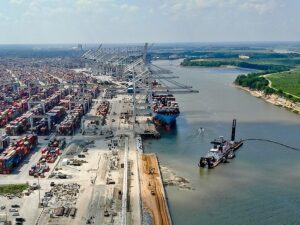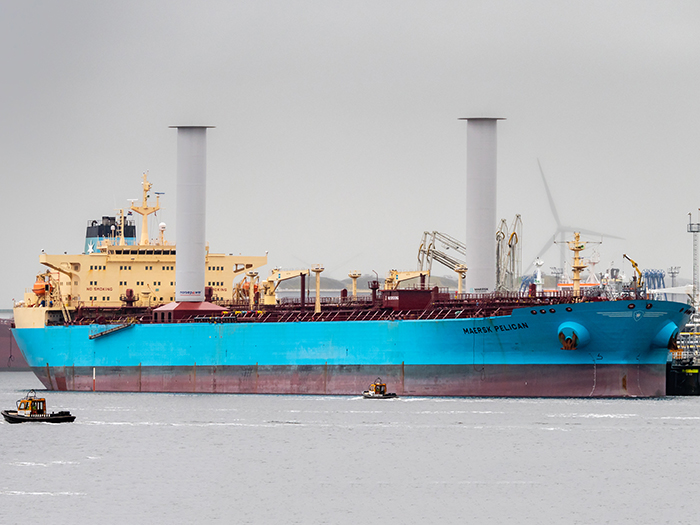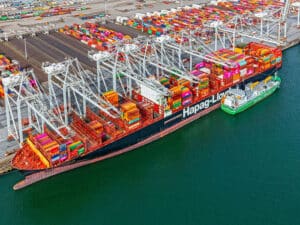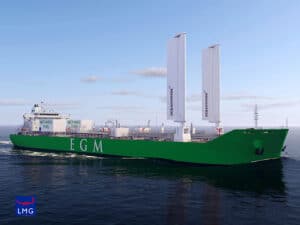
EU-funded wind assisted propulsion project launches
Written by Nick Blenkey
The WASP (Wind Assisted Ship Propulsion) project has been officially approved and launched, backed by EUR 5.4 million (about $6 million) of EU funding.
The project brings together universities, wind-assist technology providers and ship owners to research, trial and validate the operational performance of a selection of wind propulsion solutions.
The aim is to enable wind propulsion technology market penetration and contributing to a greener North Sea transportation system through harvesting the region’s abundant wind potential.
Danitsja van Heusden-van Winden, Netherlands Maritime Technology Foundation and WASP project leader said: “We’re delighted to be able to commence the WASP project and we are thrilled and looking forward to being able to test the wind propulsion systems on different types of vessels, routes and sea conditions throughout the project duration.”
The project shipping partners include Scandlines, Boeckmans Ship Management and Van Dam Shipping along with two additional partners to be added shortly.
Wind propulsion, shipping logistics and innovation experts will be monitoring and evaluating operations and developing pathways and applications to tackle the regulatory and business-related issues that are often major barriers to the uptake of new technologies. This expertise is drawn from Chalmers University of Technology, Katholieke Universiteit Leuven, Kühne Logistics University, the Danish Ecocouncil, Nord University, SSPA, the European Federation for Transport and Environment, HHX.blue. It is supported by the International Windship Association and the Netherlands Maritime Technology Foundation.
The transition to decarbonized shipping is the greatest maritime challenge of our time and demand for low carbon solutions is growing. Direct wind propulsion along with secondary renewables: wind-sourced ammonia, hydrogen and other fuels and batteries, are all pieces in this decarbonization puzzle.
The high potential for wind energy in North Sea region and innovative, automated wind propulsion technologies such as rotors sails, suction wings and rigid sails can directly harvest this resource and contribute significantly at a time of rising fuel prices, market instability, emission reduction directives, carbon pricing, a tightening regulatory and policy environment. All are making wind solutions more commercially attractive for the future.
Gavin Allwright, Secretary General of the International Windship Association said: “Wind propulsion solutions are a very important technology segment for the decarbonization of shipping. The propulsive energy provided is substantial and this is delivered directly to the ship with no need for new infrastructure. That secures a significant portion of shipowners’ fuel requirement at zero cost, creating an element of certainty in a volatile and increasingly insecure market in the future.”
These wind propulsion systems can be installed on existing vessels. Depending on the specific technical solution, savings of 5-20% and hopefully possibly up to 30% of fuel and emissions are possible for retrofits. Incorporated into optimized new builds, even higher savings are feasible.
The WASP project aims to give the market and policy makers clear indicators on operational parameters, fuel savings, business models and a collection of additional demonstrator vessels to highlight the wind-assist propulsion potential.
Darryl Hylands, Program Manager, HDV, Energy Technologies Institute (ETI) said, “This is one of ETI’s large scale demonstration projects aiming to accelerate low carbon technologies. Successfully demonstrating this technology at scale shows its capability to significantly reduce fuel costs and environmental impact of the shipping industry. On certain routes during the trial the vessel achieved fuel savings way beyond the average of 8.2 pct even with average wind conditions. There is a clear potential to achieve higher fuel savings, and hence CO2 savings, on routes with more favorable wind conditions, which further improves the commercial viability of the technology.”




